
Gangtok: The Enchanting Gateway to the Himalayas
Discover the enchanting beauty of Gangtok, a serene Himalayan city in Sikkim, India. Experience breathtaking views, rich culture, and vibrant local life in this picturesque destination.
Nestled amidst the towering peaks of the Eastern Himalayas, Gangtok is a serene and picturesque city in the Indian state of Sikkim. Known for its breathtaking views, lush greenery, and vibrant culture, Gangtok offers a perfect blend of natural beauty and urban charm. The city is perched at an elevation of 1,650 meters, providing visitors with stunning vistas of snow-capped mountains and lush valleys. Gangtok is a melting pot of cultures, with influences from Tibetan, Nepalese, and Indian traditions. The city's rich heritage is reflected in its monasteries, temples, and vibrant festivals. One of the most iconic landmarks is the Rumtek Monastery, a significant center of Tibetan Buddhism. Visitors can explore the monastery's intricate architecture and peaceful surroundings, providing a glimpse into the spiritual heart of Sikkim. The bustling MG Marg is the city's main street, lined with shops, cafes, and restaurants. Here, tourists can indulge in local delicacies, shop for handicrafts, and experience the city's lively atmosphere. For nature enthusiasts, Gangtok offers numerous trekking routes, scenic viewpoints, and botanical gardens. The Tsomgo Lake, located just 40 kilometers from the city, is a must-visit destination with its crystal-clear waters and stunning alpine scenery. Gangtok is also a gateway to other attractions in Sikkim, such as the Nathula Pass, which offers a unique experience of standing at the Indo-China border. The city is well-connected by road to other popular destinations like Pelling and Lachung, making it an ideal base for exploring the region. Whether you're seeking adventure, spirituality, or simply a peaceful retreat, Gangtok has something to offer for every traveler. Its unique blend of natural splendor, cultural richness, and warm hospitality make it a truly enchanting destination.
Local tips in Gangtok
- Visit during spring (March to May) or autumn (October to November) for the best weather and clear mountain views.
- Carry warm clothing, even in summer, as temperatures can drop significantly, especially in the evenings.
- Try the local cuisine, including momos, thukpa, and gundruk, at the many eateries along MG Marg.
- Hire a local guide for trekking routes to ensure safety and to gain deeper insights into the region.
- Respect local customs and traditions, especially when visiting monasteries and religious sites.
Gangtok: The Enchanting Gateway to the Himalayas
Nestled amidst the towering peaks of the Eastern Himalayas, Gangtok is a serene and picturesque city in the Indian state of Sikkim. Known for its breathtaking views, lush greenery, and vibrant culture, Gangtok offers a perfect blend of natural beauty and urban charm. The city is perched at an elevation of 1,650 meters, providing visitors with stunning vistas of snow-capped mountains and lush valleys. Gangtok is a melting pot of cultures, with influences from Tibetan, Nepalese, and Indian traditions. The city's rich heritage is reflected in its monasteries, temples, and vibrant festivals. One of the most iconic landmarks is the Rumtek Monastery, a significant center of Tibetan Buddhism. Visitors can explore the monastery's intricate architecture and peaceful surroundings, providing a glimpse into the spiritual heart of Sikkim. The bustling MG Marg is the city's main street, lined with shops, cafes, and restaurants. Here, tourists can indulge in local delicacies, shop for handicrafts, and experience the city's lively atmosphere. For nature enthusiasts, Gangtok offers numerous trekking routes, scenic viewpoints, and botanical gardens. The Tsomgo Lake, located just 40 kilometers from the city, is a must-visit destination with its crystal-clear waters and stunning alpine scenery. Gangtok is also a gateway to other attractions in Sikkim, such as the Nathula Pass, which offers a unique experience of standing at the Indo-China border. The city is well-connected by road to other popular destinations like Pelling and Lachung, making it an ideal base for exploring the region. Whether you're seeking adventure, spirituality, or simply a peaceful retreat, Gangtok has something to offer for every traveler. Its unique blend of natural splendor, cultural richness, and warm hospitality make it a truly enchanting destination.
When is the best time to go to Gangtok?
Iconic landmarks you can’t miss
M. G. Market
Explore M. G. Market in Gangtok, a vibrant market filled with local crafts, delicious street food, and the lively spirit of Sikkim's culture.

Ban Jhakri Falls Park
Experience the breathtaking beauty of Ban Jhakri Falls Park, a serene escape in Gangtok with stunning waterfalls and rich Sikkimese culture.

Flower Exhibition Centre - Ridge Park.
Explore the vibrant flora of Sikkim at the Flower Exhibition Centre in Ridge Park, a colorful haven for nature lovers and photographers.

Gonjang Monastery
Explore the serene beauty of Gonjang Monastery in Gangtok, a spiritual haven that embodies Tibetan culture and offers breathtaking Himalayan views.

Sikkim Himalayan Zoological Park
Experience the unique wildlife of the Himalayas at the Sikkim Himalayan Zoological Park, a sanctuary for nature lovers and a hub for conservation efforts.

Gangtok Ropeway
Experience breathtaking views of the Himalayas from the Gangtok Ropeway, a must-visit mountain cable car attraction in Sikkim, India.
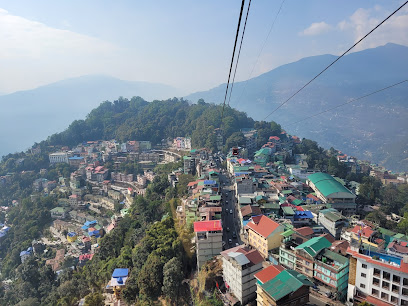
Bakthang Waterfall
Discover the breathtaking beauty of Bakthang Waterfall in Gangtok, a perfect blend of adventure and tranquility in Sikkim's natural paradise.

Hanuman Tok
Discover the serene beauty of Hanuman Tok, a sacred Hindu temple in Gangtok offering breathtaking mountain views and a peaceful atmosphere.
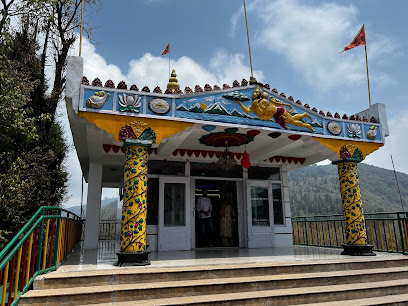
Do Drul Chorten
Discover the tranquil essence of Do Drul Chorten, a stunning Buddhist temple in Gangtok, where spirituality meets breathtaking Himalayan beauty.

MAYFAIR Spa Resort & Casino, Gangtok
Discover luxury and tranquility at MAYFAIR Spa Resort & Casino in Gangtok, where stunning views and world-class amenities await you amidst the Himalayas.

Rumtek Dharma Chakra Centre
Experience the serene beauty and spiritual depth of Rumtek Dharma Chakra Centre, a prominent Buddhist monastery in Sikkim.

Ganesh Tok
Experience the spiritual serenity of Ganesh Tok, a Hindu temple with breathtaking views of Kanchenjunga, perfect for reflection and cultural discovery.

Taste Of Tibet
Experience authentic Tibetan cuisine in the heart of Gangtok at Taste Of Tibet, a must-visit for food lovers and cultural explorers.

Enchey Monastery
Experience the serene beauty and rich cultural heritage of Enchey Monastery, a hidden gem in the heart of Gangtok, Sikkim.

Mahatma Gandhi Statue
Explore the Mahatma Gandhi Statue in Gangtok: A serene historical landmark symbolizing peace amidst the stunning Himalayan backdrop.

Unmissable attractions to see
Siddheshwar Dham (Char Dham)
Explore the serene beauty and spiritual significance of Siddheshwar Dham in Sikkim, a must-visit Hindu temple complex surrounded by stunning landscapes.
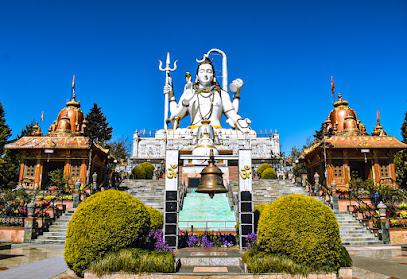
Ban Jhakri Falls Park
Experience the breathtaking beauty of Ban Jhakri Falls Park, a serene escape in Gangtok, Sikkim, perfect for nature lovers and adventure seekers alike.

Flower Exhibition Centre - Ridge Park.
Discover the vibrant beauty of Sikkim's flora at the Flower Exhibition Centre in Ridge Park, a must-visit destination for nature enthusiasts.

Tashi View Point, Bojoghari
Experience the serene beauty of Tashi View Point in Gangtok, Sikkim, where majestic mountain views and local culture await.

Baba Harbhajan Singh Temple
Discover the spiritual serenity of Baba Harbhajan Singh Temple in Sikkim, a must-visit destination for peace seekers and cultural explorers.

Tea Garden View
Discover the breathtaking beauty of Tea Garden View in Darjeeling, where lush tea plantations meet stunning Himalayan vistas.

Gonjang Monastery
Discover tranquility at Gonjang Monastery, a serene Buddhist temple in Sikkim, surrounded by stunning Himalayan landscapes.
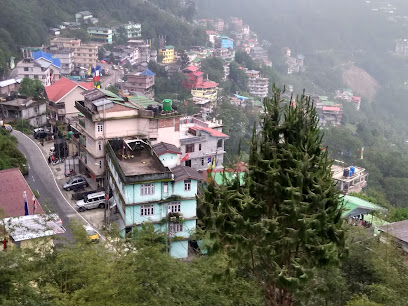
Sikkim Himalayan Zoological Park
Explore the Sikkim Himalayan Zoological Park: A captivating wildlife experience in the heart of Gangtok, showcasing the region's unique fauna.

Padmaja Naidu Himalayan Zoological Park
Explore the breathtaking Padmaja Naidu Himalayan Zoological Park in Darjeeling, home to unique Himalayan wildlife and a commitment to conservation.

Do Drul Chorten
Discover the spiritual charm of Do Drul Chorten, a stunning Buddhist stupa offering breathtaking views and cultural richness in the heart of Gangtok.

Bakthang Waterfall
Explore the stunning Bakthang Waterfall in Gangtok, Sikkim - a serene escape into nature's beauty amidst lush landscapes.

Hanuman Tok
Experience tranquility and breathtaking views at Hanuman Tok, the revered Hindu temple offering a peaceful retreat in the hills of Gangtok.

Observatory Hill View Point
Experience breathtaking views and serene surroundings at Observatory Hill View Point in Darjeeling, a must-visit tourist attraction in the Himalayas.

Darjeeling Clock Tower
Explore the timeless beauty of the Darjeeling Clock Tower, a historic landmark that reflects the rich culture and heritage of this enchanting hill station.

Dali Monastery
Discover the tranquil beauty and spiritual essence of Dali Monastery, a captivating Buddhist temple in the heart of Darjeeling's lush hills.

Essential places to dine
SALT & PEPPER 002
Experience exquisite Chinese and Mughlai cuisine at Salt & Pepper in Gangtok, where every dish tells a story of local flavors.

Osm Restro & Lounge
Discover exquisite flavors at Osm Restro & Lounge in Gangtok – where fine dining meets diverse culinary delights.

Taste Of Tibet
Discover authentic Tibetan cuisine at Taste Of Tibet in Gangtok – where each dish tells a story from the heart of the Himalayas.

Gangtok Groove
Discover the vibrant flavors and sounds of Gangtok at Gangtok Groove - your go-to spot for Asian fusion cuisine and live music.

Nimtho
Discover authentic Nepalese cuisine at Nimtho in Gangtok – where every bite tells a story.

Shuffle Momos
Experience authentic momos and Sikkimese cuisine at Shuffle Momos in Gangtok – where tradition meets taste.

The Square Family Restaurant and Bar
Experience authentic Indian cuisine in the heart of Gangtok at The Square Family Restaurant and Bar.

Hotlix Food & Drink(Mg margh)
Experience authentic Indian cuisine at Hotlix Food & Drink in Gangtok - where flavor meets tradition in every dish.

The Dragon Wok
Experience authentic Chinese and Japanese flavors at The Dragon Wok in Gangtok – where culinary excellence meets inviting ambiance.

HOTEL SHER-E-PUNJAB & (Family Restaurant & Bar)
Discover the flavors of India and China at Hotel Sher-E-Punjab, a welcoming restaurant and bar in Gangtok perfect for family dining.
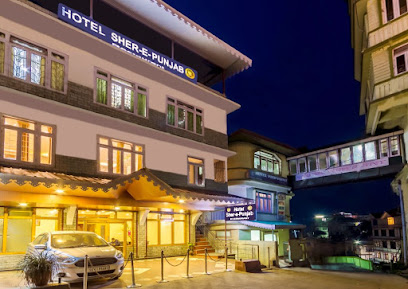
Parivar Restaurant
Discover delicious vegetarian cuisine at Parivar Restaurant in Gangtok – your gateway to North Indian, South Indian & Chinese flavors.
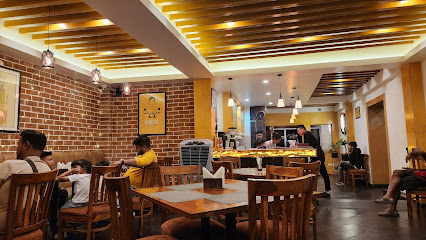
Khan Uncle's Biryani House
Discover authentic North Indian flavors at Khan Uncle's Biryani House - A culinary treasure in the heart of Gangtok.

Fat Panda's Kitchen
Discover authentic Chinese flavors at Fat Panda's Kitchen in Gangtok - where culinary delights meet breathtaking views.
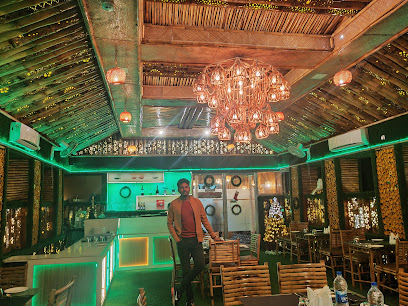
The Original Roll House
Experience authentic Indian street food at The Original Roll House in Gangtok—home to delicious rolls and hearty breakfast options.

Apna Dhaba
Discover authentic North Indian flavors at Apna Dhaba in Gangtok – where culinary traditions meet breathtaking views.

Markets, malls and hidden boutiques
M. G. Market
Explore the vibrant M. G. Market in Gangtok for an unforgettable shopping experience filled with local crafts, delicious treats, and cultural encounters.

Fashion Factory
Explore the vibrant styles at Fashion Factory in Gangtok, where local fashion meets trendy designs for an unforgettable shopping experience.

Pantaloons (MG Marg, Gangtok)
Discover the latest trends in fashion at Pantaloons, Gangtok, with styles for everyone from casual to formal wear in a vibrant shopping environment.

Westside, Gangtok
Discover unique clothing styles at Westside, Gangtok – where local culture meets contemporary fashion in a vibrant shopping atmosphere.

Darjeeling Stores
Explore the vibrant fashion scene at Darjeeling Stores, where traditional Sikkim meets contemporary style in the heart of Gangtok.

TRENDS
Discover stylish casual wear at Trends, a premier clothing store in Gangtok, perfect for tourists seeking trendy outfits and local flair.

The Raymond Shop
Explore The Raymond Shop in Gangtok for exquisite clothing, quality fabrics, and personalized tailoring that embodies style and elegance in every piece.

SAMRAT (OLD DARJEELING STORE)
Discover a unique blend of casual and formal wear at Samrat, the Old Darjeeling Store in Gangtok, Sikkim, where fashion meets tradition.

New Royal Collection
Experience unique fashion at New Royal Collection, a premier clothing store in Gangtok that celebrates the blend of modern style and traditional Sikkimese culture.
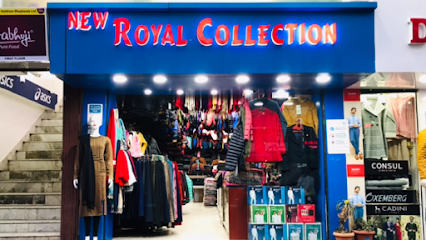
Firstcry.com
Discover the ultimate baby store in Gangtok at Firstcry.com, where quality meets convenience for all your parenting needs.

Levi's Exclusive Store - Gangtok
Discover fashion at Levi's Exclusive Store in Gangtok, where quality denim meets the vibrant spirit of Sikkim's capital.

Archies Gallery
Explore Archies Gallery in Gangtok for unique gifts and souvenirs that capture the spirit of Sikkim's rich culture and artistry.

Planet Fashion
Explore the latest trends at Planet Fashion, Gangtok's premier destination for stylish casual wear and fashionable accessories.
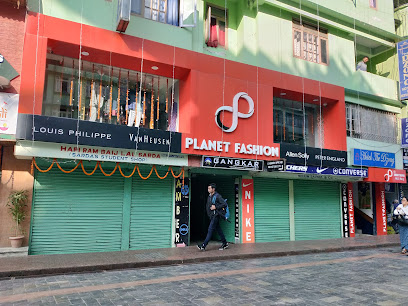
Hari Stores
Explore the vibrant fashion scene at Hari Stores, where local craftsmanship meets contemporary style in the heart of Gangtok.

M/S CHINA BAZAR
Discover the essence of Sikkim at M/S China Bazar, where unique gifts and local handicrafts await in the heart of Gangtok.

Essential bars & hidden hideouts
Gangtok Groove
Experience the best of live music, Asian fusion cuisine, and vibrant nightlife at Gangtok Groove, the heart of Gangtok's entertainment scene.

Cafe Live & Loud
Experience the vibrant pulse of Gangtok at Cafe Live & Loud, where live music, delicious cuisine, and a welcoming atmosphere await every visitor.

Lounge 31A
Experience the vibrant nightlife at Lounge 31A in Gangtok, where live music, delicious cuisine, and refreshing drinks await you.

Lyric Karaoke Restaurant & Bar
Experience the vibrant nightlife of Gangtok at Lyric Karaoke Restaurant & Bar, where delicious food meets unforgettable karaoke fun!

Mehfill- Resto Bar
Experience the vibrant culinary scene at Mehfill Resto Bar in Gangtok, Sikkim, where fine dining meets live music and stunning views.

The Jungle Bar
Experience the vibrant flavors of modern Indian cuisine at The Jungle Bar in Gangtok, a perfect blend of culture and taste.

FatMom Local Bar
Discover the vibrant atmosphere and local flavors of Gangtok at FatMom Local Bar, a must-visit spot for every traveler.

Rhythm And wine cafe
Experience the flavors of Sikkim at Rhythm And Wine Cafe, where grilled delights meet aromatic coffee amidst the vibrant ambiance of Gangtok.

Roadways Karaoke N Bar
Discover the vibrant nightlife of Gangtok at Roadways Karaoke N Bar, where every night is filled with music, laughter, and unforgettable memories.
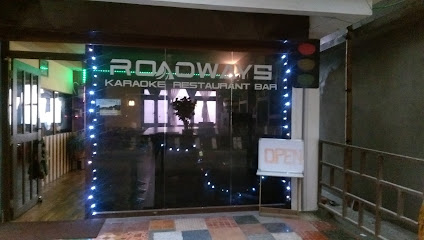
Basement Lounge & Bistro (Delam)
Experience the lively ambiance and delectable cuisine at Basement Lounge & Bistro, a premier bar in the heart of Gangtok, Sikkim.

The Rabbit Hole
Discover The Rabbit Hole in Gangtok, a charming bar offering unique cocktails and a cozy atmosphere, perfect for unwinding after a day of exploration.

Knock Bar and Restaurant
Experience the vibrant culinary scene of Gangtok at Knock Bar and Restaurant, where delicious grilled dishes and refreshing drinks await.

Chill-in
Discover Chill-in, the cozy pub in Gangtok, Sikkim, where drinks, snacks, and local culture blend for a memorable experience.

The Sky Deck - Rooftop Pool Bar & Restaurant
Experience breathtaking views and delicious cuisine at The Sky Deck - your ultimate rooftop retreat in Gangtok.
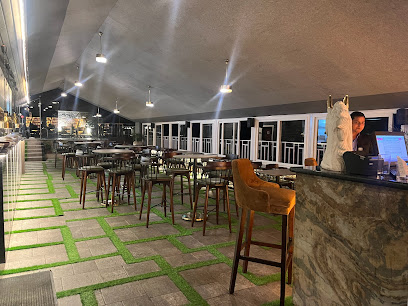
Hybrid Restro Pub
Immerse yourself in the vibrant nightlife of Gangtok at Hybrid Restro Pub, where delicious food meets live music in a lively atmosphere.
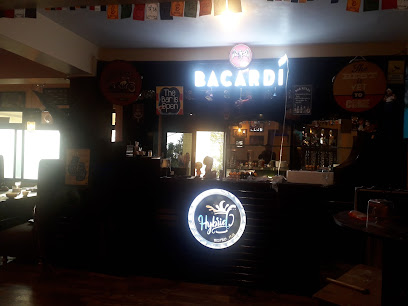
Travel experiences inspired by this city
Explore more travel diariesLocal Phrases
-
- Helloनमस्ते
[namaste] - Goodbyeअलविदा
[alvida] - Yesहां
[haan] - Noनहीं
[nahi] - Please/You're welcomeकृपया/स्वागत है
[krupaya/swagat hai] - Thank youधन्यवाद
[dhanyavad] - Excuse me/Sorryक्षमा कीजिए/माफ़ कीजिए
[kshama kijiye/maaf kijiye] - How are you?आप कैसे हैं?
[aap kaise hain?] - Fine. And you?ठीक हूँ। आप?
[thik hoon. aap?] - Do you speak English?क्या आप अंग्रेज़ी बोलते हैं?
[kya aap angrezi bolte hain?] - I don't understandमुझे समझ में नहीं आया
[mujhe samajh mein nahi aaya]
- Helloनमस्ते
-
- I'd like to see the menu, pleaseकृपया मेन्यू दिखाइए
[krupaya menu dikhaiye] - I don't eat meatमैं मांस नहीं खाता/खाती
[main maans nahi khaata/khaati] - Cheers!जय हो!
[jay ho] - I would like to pay, pleaseकृपया मैं भुगतान करना चाहूं
[krupaya main bhugtan karna chaahun]
- I'd like to see the menu, pleaseकृपया मेन्यू दिखाइए
-
- Help!बचाओ!
[bachao!] - Go away!चले जाओ!
[chale jao!] - Call the Police!पुलिस को बुलाओ!
[police ko bulaao!] - Call a doctor!डॉक्टर को बुलाओ!
[doctor ko bulaao!] - I'm lostमैं खो गया/गई हूँ
[main kho gaya/gayi hoon] - I'm illमुझे बीमारी है
[mujhe bimari hai]
- Help!बचाओ!
-
- I'd like to buy...मैं ... खरीदना चाहूं
[main ... khareedna chaahun] - I'm just lookingमैं सिर्फ देख रहा/रही हूँ
[main sirf dekh raha/rahi hoon] - How much is it?यह कितने का है?
[yah kitne ka hai?] - That's too expensiveयह बहुत महंगा है
[yah bahut mahanga hai] - Can you lower the price?क्या आप कीमत कम कर सकते हैं?
[kya aap keemat kam kar sakte hain?]
- I'd like to buy...मैं ... खरीदना चाहूं
-
- What time is it?समय क्या है?
[samay kya hai?] - It's one o'clockएक बजे हैं
[ek baje hain] - Half past (10)दस बजे तक
[das baje tak] - Morningसुबह
[subah] - Afternoonदोपहर
[dopahar] - Eveningशाम
[shaam] - Yesterdayकल
[kal] - Todayआज
[aaj] - Tomorrowकल
[kal] - 1एक
[ek] - 2दो
[do] - 3तीन
[teen] - 4चार
[chaar] - 5पाँच
[paanch] - 6छे
[chhe] - 7सात
[saat] - 8आठ
[aath] - 9नौ
[nau] - 10दस
[das]
- What time is it?समय क्या है?
-
- Where's a/the...?... कहाँ है?
[... kahaan hai?] - What's the address?पता क्या है?
[pata kya hai?] - Can you show me (on the map)?क्या आप मुझे दिखा सकते हैं (नक्शे पर)?
[kya aap mujhe dikha sakte hain (nakse par)?] - When's the next (bus)?अगली (बस) कब है?
[agli (bas) kab hai?] - A ticket (to ....)एक टिकट (.... के लिए)
[ek ticket (... ke liye)]
- Where's a/the...?... कहाँ है?
History of Gangtok
-
Gangtok, nestled in the eastern Himalayan range, has a rich history that dates back to ancient times. The region was originally inhabited by the Lepchas, who are believed to be among the earliest settlers. Known as the 'Rong,' they lived harmoniously with nature and practiced animism, worshipping nature spirits and ancestors.
-
The history of Gangtok took a significant turn with the advent of Buddhism in the 8th century, introduced by Guru Padmasambhava. The establishment of numerous monasteries, including the Enchey Monastery in the 19th century, cemented Gangtok's reputation as a significant center of Buddhist culture and learning.
-
During the 19th century, Gangtok came under British influence as they established ties with the Chogyal rulers of Sikkim. The British interest in the region was primarily strategic, aimed at countering the influence of neighboring Tibet and Bhutan. This era saw the construction of roads and other infrastructure, facilitating Gangtok's growth.
-
The Namgyal dynasty played a crucial role in shaping Gangtok's history. Established in the 17th century, the Namgyal kings ruled Sikkim for over three centuries. Under their rule, Gangtok grew from a small village into a bustling town and later the capital of Sikkim in 1894. The monarchy's patronage helped preserve Gangtok's unique cultural heritage.
-
In 1975, Sikkim, along with Gangtok, became the 22nd state of India through a democratic process. This transition marked a new chapter in Gangtok's history, integrating it into the Indian Union while retaining its distinct cultural identity. The political and economic stability brought by this integration spurred Gangtok's development as a modern city.
-
Today, Gangtok is a melting pot of cultures, reflecting the diverse ethnic groups that call it home. The city is known for its vibrant festivals, such as Losar, Diwali, and Saga Dawa, which are celebrated with great enthusiasm. Modern Gangtok seamlessly blends tradition with modernity, offering a glimpse into its storied past while looking towards a dynamic future.
Gangtok Essentials
-
Gangtok is the capital city of the Indian state of Sikkim. The nearest airport is Pakyong Airport, located about 35 kilometers from Gangtok. However, flights to Pakyong are limited, so the more commonly used airport is Bagdogra Airport in West Bengal, approximately 124 kilometers away. From Bagdogra, you can hire a taxi or take a shared jeep to Gangtok, which takes around 4-5 hours. Alternatively, you can take a train to New Jalpaiguri Railway Station, which is also around 124 kilometers from Gangtok. From the railway station, taxis and shared jeeps are available for the onward journey.
-
Gangtok has a range of transportation options. Shared jeeps and taxis are the most common means for getting around. For short distances within the city, you can use local taxis. There are also private car rental services if you prefer to drive yourself. The SNT (Sikkim Nationalised Transport) buses provide connectivity to various parts of Sikkim and nearby states. Additionally, the city has a ropeway cable car that offers scenic views of Gangtok and its surroundings.
-
The official currency in Gangtok, as in the rest of India, is the Indian Rupee (INR). Credit and debit cards are widely accepted in hotels, restaurants, and larger shops. However, it is advisable to carry some cash, especially when visiting smaller establishments and markets. ATMs are available throughout Gangtok, but it is wise to withdraw sufficient cash before traveling to remote areas where ATM availability may be limited.
-
Gangtok is generally considered a safe destination for tourists. However, as with any travel destination, it is important to take standard precautions. Avoid walking alone at night in poorly lit areas and always keep an eye on your belongings in crowded places. While Gangtok does not have specific high-crime areas targeting tourists, it is always best to stay vigilant and aware of your surroundings.
-
In case of emergency, dial 112 for immediate assistance. Gangtok has police stations and medical facilities available for emergencies. It is recommended to have travel insurance that covers medical emergencies. For minor health issues, there are numerous pharmacies in Gangtok where you can purchase over-the-counter medications. The nearest major hospital is the STNM Hospital, which provides a range of medical services.
-
Fashion: Do dress modestly, especially when visiting religious sites. Avoid wearing revealing clothing. Religion: Do respect local customs and traditions. Always remove your shoes when entering a temple or monastery. Public Transport: Do be respectful and give up your seat to elderly passengers. Don't eat or drink on public transport. Greetings: Do greet people with a namaste (pressing your palms together) or a handshake. Eating & Drinking: Do try local delicacies and accept food offerings graciously. Don't refuse hospitality, as it is considered impolite.
-
To experience Gangtok like a local, visit the M.G. Marg, a pedestrian-only street that is the heart of the city, where you can shop for local goods and enjoy local cuisine. Engage with locals, as they are often friendly and willing to share stories about Gangtok's history and culture. Don't miss visiting the Enchey Monastery and the Namgyal Institute of Tibetology. For a unique experience, take a day trip to Tsomgo Lake or Nathula Pass, both offering breathtaking views and a glimpse into the region's natural beauty.
Trending Landmark in Gangtok
-
M. G. Market
-
Ban Jhakri Falls Park
-
Flower Exhibition Centre - Ridge Park.
-
Gonjang Monastery
-
Sikkim Himalayan Zoological Park
-
Gangtok Ropeway
-
Bakthang Waterfall
-
Hanuman Tok
-
Do Drul Chorten
-
MAYFAIR Spa Resort & Casino, Gangtok
-
Rumtek Dharma Chakra Centre
-
Ganesh Tok
-
Taste Of Tibet
-
Enchey Monastery
-
Mahatma Gandhi Statue
Nearby Cities to Gangtok
-
Things To Do in Darjeeling
-
Things To Do in Siliguri
-
Things To Do in Paro
-
Things To Do in Phuentsholing
-
Things To Do in Thimphu
-
Things To Do in Wangdue Phodrang
-
Things To Do in Punakha
-
Things To Do in Rangpur
-
Things To Do in Trongsa
-
Things To Do in Namche Bazaar
-
Things To Do in Bumthang
-
Things To Do in Jakar
-
Things To Do in Mongar
-
Things To Do in Trashigang
-
Things To Do in Nagarkot















